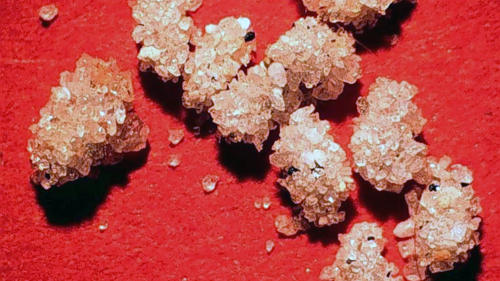Summary
Flea cocoons camouflage pupating larvae. They also physically protect them from predators. And, within cocoons, mature fleas can enter into a quiescent state for up to 5 months. This allows them to delay emerging until a host is present and conditions are suitable.
Cocoons aren’t necessary for survival and metamorphosis. They also don’t offer any protection against insecticides. And cocoons aren’t a barrier to water loss, so they don’t prevent desiccation.
Details
Advantages of Flea Cocoons
Protection from Predation
Cocoons protect pupating fleas from potential predators. In a study done with ants, naked pupae and pupae in damaged cocoons were readily preyed upon. However, those in full cocoons were protected. Similarly, cocooned fleas are safe from cannibalizing flea larvae.
Prolonging Emergence in Poor Conditions
Adult fleas can enter into a quiescent state for up to 5 months. This ability is only possible within a cocoon. Once a pre-emerged flea detects a nearby host, it’ll immediately exit it’s cocoon. The two primary stimuli are heat and pressure. The cocoon prevents fleas from detecting stimuli that aren’t host related, thus minimizing emergence when a host is absent.
The pre-emerged (pharate) state causes many control problems. Cocooned fleas can survive for extended periods of time without a host. As a result, they can infest hosts that don’t often return to their dens, as well as free-roaming animals. Additionally, pharate adults can survive in poor conditions. Those held at 2% relative humidity and 60.8°F (16°C) can survive for at least 35 days. 90% of emerged adults will die in the same conditions.
Camouflage
Flea cocoons consist of a soft, sticky, silk-like material. Threads are loosely wrapped around the larvae. As a result, environmental debris easily attaches to the cocoons. Flea cocoons rest in the same locations where the debris originates. This gives them a near perfect camouflage Img 1.

Img 1 Flea cocoons get covered with debris and become almost perfectly camouflaged in their environment.
Protection from Vacuuming
When flea larvae build cocoons, the fibers are spun into the carpet matrix. The cocoons end up tightly bound into the carpeting. As a result, vacuum cleaners are relatively ineffective at a removing them. Only the cocoons located near the top of the carpet pile will get sucked up.
Disproven Advantages of Flea Cocoons
Protection from Environmental Conditions
Prepupae and pupae are the most resilient life stages. However, their hardiness isn’t directly due to the cocoon. The cocoon doesn’t protect against dry conditions and desiccation. It isn’t a barrier to water loss.
Insecticide Effectiveness
Cocoons were once thought to absorb insecticides, making treatments more lethal. This has been disproven. Contrarily, it was also hypothesized that cocoons may protect fleas from insecticides. Cocoons placed in carpets were fairly resistant to insecticide treatments. However, this is due to insecticide being unable to penetrate the carpet canopy. The cocoon itself isn’t a barrier to insecticides.
Survival and Metamorphosis
Fleas don’t need cocoons to survive and successfully complete metamorphosis. In certain situations, flea larvae will pupate without cocoons (naked pupae). Naked pupae still successfully reach adulthood without increased mortality.





You must log in to post a comment. Log in now.